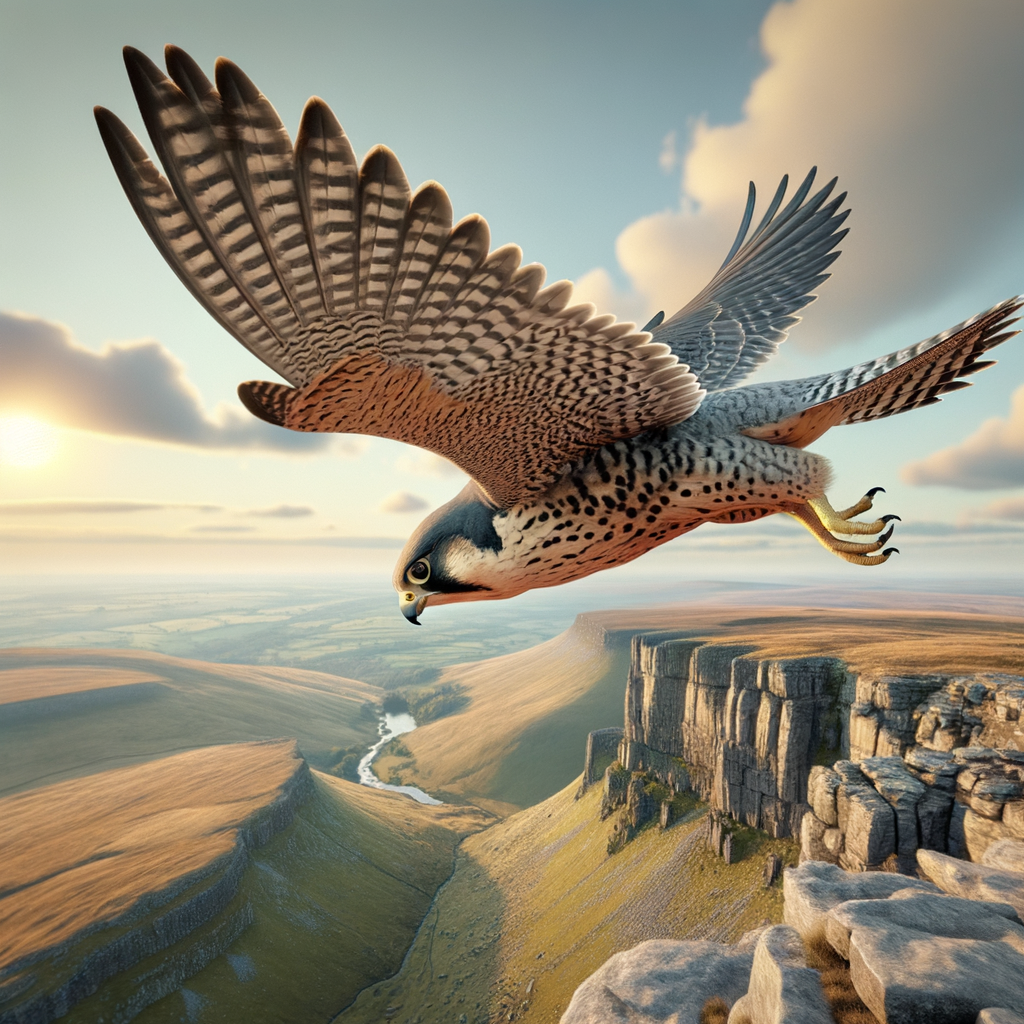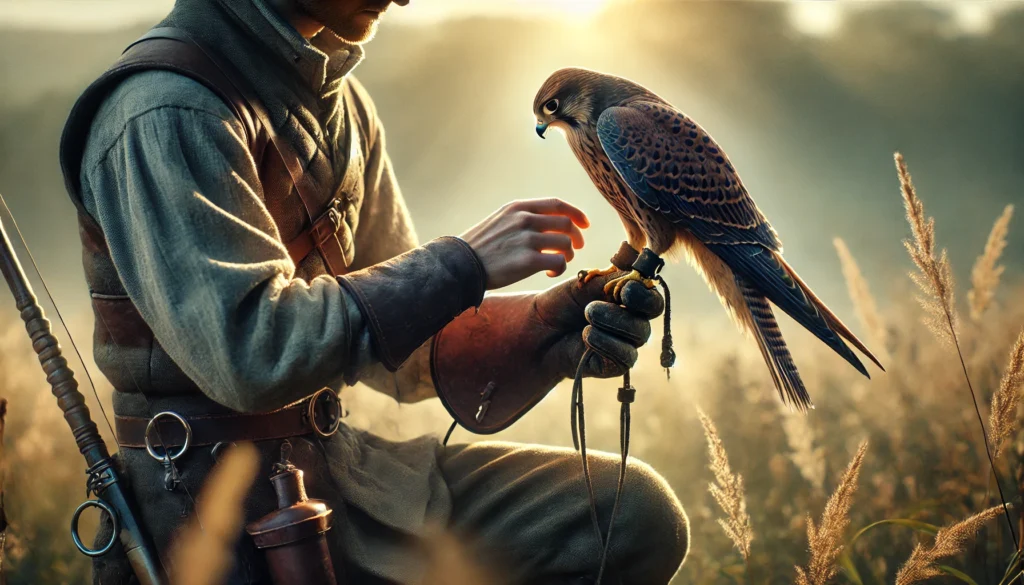Fascinating Facts About Peregrine Falcons
- Incredible Speed: Peregrine Falcons are the fastest birds in the world, reaching speeds of up to 240 mph when diving.
- Widespread Habitat: Found almost everywhere on Earth, from deserts to the Arctic tundra.
- Unique Hunting Technique: Famous for their high-speed stoop, or dive, to catch prey mid-air with sharp talons.
- Adaptation to Urban Areas: These falcons have adapted well to city life, often nesting on skyscrapers and bridges.
- Conservation Success: Once endangered, their populations have rebounded thanks to various conservation efforts.
- Sharp Vision: They have excellent eyesight, up to eight times better than humans, enabling them to spot prey from great distances.
- Powerful Beak: Their beak has a special notch used to sever the spinal cords of their prey quickly.
- Distinctive Appearance: Easily recognized by their blue-gray wings, barred white underparts, and dark head with a black “mustache” stripe.
Learn more about these amazing creatures and the world of falconry with us at Learn Falconry!
Discovering the Majesty of Peregrine Falcons: Nature’s Winged Warriors
Imagine you’re strolling through the lush green fields of Ireland, feeling the soft whisper of the wind. Suddenly, you spot an incredible spectacle ‘ a peregrine falcon soaring with breathtaking swiftness and grace, just like an ancient Celtic warrior charging across the battlefield. This awe-inspiring bird of prey, with its keen eyes and unparalleled speed, captures the very essence of wild beauty and untamed power.
At Learn Falconry, we immerse ourselves in the fascinating world of birds of prey, especially the peregrine falcon, the fastest bird on the planet. These incredible creatures can reach up to 240 miles per hour when diving for prey, making them true speedsters of the sky. But there’s so much more to these winged warriors than meets the eye. By understanding their vital role in our ecosystem, and how we can help protect them, you’ll gain a deeper appreciation for these incredible birds.
So, stay with us on this thrilling journey. You’ll uncover amazing facts about the peregrine falcon’s hunting techniques, their critical role in maintaining the balance of nature, and how they have inspired countless myths and legends. Trust us, you won’t want to miss out on this incredible story ‘ as captivating as a folktale whispered by the fire on a cozy Irish night.
Understanding the Peregrine Falcon in Falconry
The peregrine falcon, known scientifically as Falco peregrinus, is one of the most admired birds in the world of falconry. With its swift flight and incredible hunting skills, the peregrine falcon is a remarkable species that captivates the hearts of many falconers. Here at Learn Falconry, we are passionate about sharing knowledge and fostering an appreciation for these magnificent birds.
Characteristics of the Peregrine Falcon
Peregrine falcons are known for their remarkable speed. They can dive at speeds of over 200 miles per hour, making them the fastest animals on the planet. These birds have sharp talons and beaks, adapted for hunting and tearing their prey. Their hunting techniques are incredible to watch and are often studied by falconers looking to understand the best ways to train and care for these birds.
Peregrine falcons have a beautiful appearance, with a slate-blue back, barred white underparts, and a distinct dark mustache mark on their face. Their keen eyesight allows them to spot prey from great distances. They predominantly feed on other birds, which they catch mid-air with their powerful talons.
Different Species of Peregrine Falcons
There are several subspecies of peregrine falcons found around the world. Each subspecies has adapted to its environment, contributing to the bird’s widespread distribution. The variation among peregrine falcon subspecies includes differences in size, plumage, and habitat preferences.
For more detailed information about the different types of falcons, including the peregrine species, you can check out our section on species of falcons.
Peregrine Falcons in Falconry
Peregrine falcons have a long history in falconry, dating back thousands of years. Their incredible hunting abilities and trainable nature make them a favorite among experienced falconers. The art of training a peregrine falcon involves a mix of traditional and modern techniques.
Falconry training includes teaching the peregrine to respond to commands, hunt for prey, and return to its handler. The process requires patience, dedication, and a deep understanding of the bird’s behavior and needs.
Falconry Equipment for Peregrines
To successfully train a peregrine falcon, falconers use specific equipment. This can include hoods, jesses, leashes, and telemetry devices. Our detailed guide on falconry equipment offers insights into the essential tools needed for training and caring for your falcon.
Health and Nutrition
Keeping a peregrine falcon healthy is vital for its success in falconry. This involves a well-balanced diet, regular health check-ups, and proper housing. Falcons need a diet rich in protein, typically consisting of quail, pigeons, or specially prepared falcon feed. Hydration is equally important, as is maintaining an environment that mimics their natural habitat.
For more tips on keeping your falcon in peak condition, visit our section on falcon health and nutrition.
Legal Aspects of Falconry
Before engaging in falconry with a peregrine falcon, it’s important to understand the legal requirements. Regulations can vary based on location, and it’s crucial to ensure you have the appropriate permits and follow all laws to protect these magnificent birds and ensure ethical practices in falconry.
For more information on this topic, check out our legal aspects of falconry section.
By exploring the fascinating world of the peregrine falcon and understanding its integral role in falconry, enthusiasts can develop a deeper appreciation and knowledge for this ancient practice. Whether you’re considering getting involved in falconry or seeking to expand your existing expertise, learning about these incredible birds and the art of falconry can be an enriching experience.
Fascinating Facts About Peregrine Falcons: Your Ultimate Guide
The peregrine falcon is one of the most incredible birds of prey you’ll ever learn about. At Learn Falconry, we’re excited to dive deep into the life and habits of these amazing creatures. Let’s explore some fascinating aspects of peregrine falcons.
Population Status
Peregrine falcons have made a remarkable comeback in various regions. For instance, the population in Washington state is stable and increasing. In Virginia, the breeding population hit a record 35 pairs in 2023, maintaining at least 28 pairs for the past eight years. This growth highlights the success of conservation efforts.
| Region | Breeding Population | Notable Increase |
|---|---|---|
| Washington | Secure | – |
| Virginia | 35 pairs (2023) | Consistently above 28 pairs since 2016 |
Breeding and Nesting Habits
Peregrine falcons are known for their unique breeding and nesting habits. In Washington, there were 190 known breeding territories in 2021, much higher than historical numbers. Similarly, Virginia’s population produced a record 70 young in 2023 alone. These birds mate for life and often return to the same nest year after year.
| Region | Breeding Territories | Record Young Produced (2023) |
|---|---|---|
| Washington | 190 (2021) | – |
| Virginia | – | 70 |
Conservation Status
Peregrine falcons were once listed as an endangered species in 1970 but were delisted in 1999 thanks to the ban on DDT and intensive conservation efforts. They are now classified as a “state sensitive species” in some regions, and ongoing monitoring ensures their population remains stable.
Range and Distribution
These birds have an extensive range, living in various habitats from tundras to tropical regions. They do not fit the criteria for a vulnerable species due to their wide distribution.
Monitoring and Management
The Washington Department of Fish and Wildlife no longer actively monitors them, but they collaborate with partners for opportunistic monitoring in key areas. The recovery in Virginia is attributed to the dedicated efforts of numerous individuals over decades.
Physical Characteristics
Peregrine falcons are midsized birds but pack a lot of power. They weigh between 530 to 1600 grams and have a wingspan of 39.4 to 43.3 inches (100-110 cm). Adults are blue-gray on top with light breast feathers and dark heads, while juveniles sport brownish feathers with vertical streaks.
| Characteristic | Value |
|---|---|
| Weight | 530-1600 grams |
| Wingspan | 39.4-43.3 inches (100-110 cm) |
| Adult Plumage | Blue-gray top, light breast |
| Juvenile Plumage | Brownish with vertical streaks |
Hunting and Diet
Peregrine falcons are the fastest birds in the world, capable of diving at 150-200 mph and cruising at speeds of 24-33 mph. Their diet mainly consists of small to medium-sized birds, reptiles, mammals, and occasionally bats.
By understanding these critical aspects, you’ll gain a deeper appreciation for peregrine falcons and the incredible work that goes into ensuring their continued survival and thriving. At Learn Falconry, we aim to share more about these awe-inspiring birds.
The Elegance and Resilience of Peregrine Falcons
As we wrap up our exploration of peregrine falcons, it’s inspiring to see how these magnificent birds have soared through challenges and emerged stronger than ever. From achieving record breeding pairs in Virginia to their impressive global distribution, peregrine falcons symbolize triumph and adaptability.
Thanks to concerted conservation efforts, peregrine falcons have successfully rebounded from their endangered status, showcasing their remarkable resilience. Their widespread habitats’from cliffs and urban buildings to diverse climates’highlight their incredible adaptability. Watching a peregrine falcon dive at speeds up to 200 mph or observing their intricate behaviors and nurturing young is a testament to their unparalleled grace and power.
With their population numbers rising and their habitats spanning the world, peregrine falcons are a beacon of hope for wildlife conservation. Whether you’re a falconry enthusiast or just a nature lover, understanding and appreciating these incredible raptors is a step towards preserving our natural heritage. Embrace the story of the peregrine falcon and be part of a community that values and protects our feathered friends!



